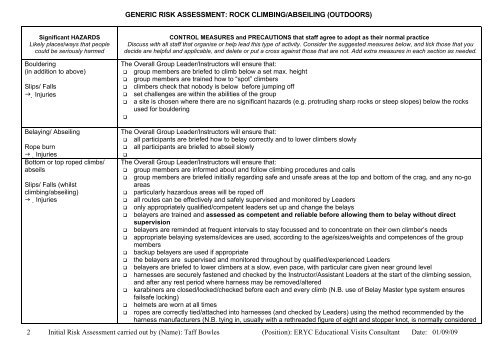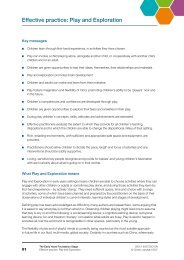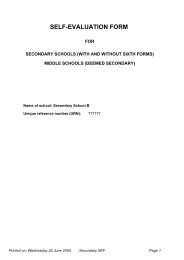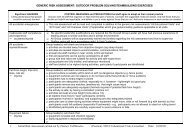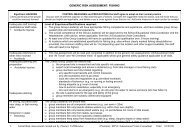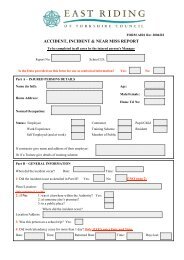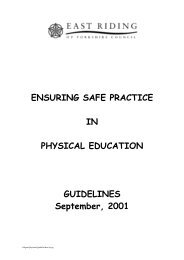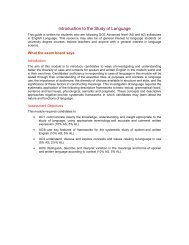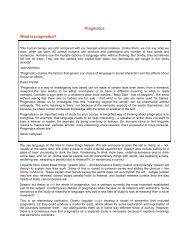generic risk assessment: rock climbing/abseiling - eRiding
generic risk assessment: rock climbing/abseiling - eRiding
generic risk assessment: rock climbing/abseiling - eRiding
Create successful ePaper yourself
Turn your PDF publications into a flip-book with our unique Google optimized e-Paper software.
GENERIC RISK ASSESSMENT: ROCK CLIMBING/ABSEILING (OUTDOORS)Significant HAZARDSLikely places/ways that peoplecould be seriously harmedBouldering(in addition to above)Slips/ Falls InjuriesCONTROL MEASURES and PRECAUTIONS that staff agree to adopt as their normal practiceDiscuss with all staff that organise or help lead this type of activity. Consider the suggested measures below, and tick those that youdecide are helpful and applicable, and delete or put a cross against those that are not. Add extra measures in each section as needed.The Overall Group Leader/Instructors will ensure that: group members are briefed to climb below a set max. height group members are trained how to “spot” climbers climbers check that nobody is below before jumping off set challenges are within the abilities of the group a site is chosen where there are no significant hazards (e.g. protruding sharp <strong>rock</strong>s or steep slopes) below the <strong>rock</strong>sused for boulderingBelaying/ AbseilingRope burn InjuriesBottom or top roped climbs/abseilsSlips/ Falls (whilst<strong>climbing</strong>/<strong>abseiling</strong>) InjuriesThe Overall Group Leader/Instructors will ensure that: all participants are briefed how to belay correctly and to lower climbers slowly all participants are briefed to abseil slowlyThe Overall Group Leader/Instructors will ensure that: group members are informed about and follow <strong>climbing</strong> procedures and calls group members are briefed initially regarding safe and unsafe areas at the top and bottom of the crag, and any no-goareas particularly hazardous areas will be roped off all routes can be effectively and safely supervised and monitored by Leaders only appropriately qualified/competent leaders set up and change the belays belayers are trained and assessed as competent and reliable before allowing them to belay without directsupervision belayers are reminded at frequent intervals to stay focussed and to concentrate on their own climber’s needs appropriate belaying systems/devices are used, according to the age/sizes/weights and competences of the groupmembers backup belayers are used if appropriate the belayers are supervised and monitored throughout by qualified/experienced Leaders belayers are briefed to lower climbers at a slow, even pace, with particular care given near ground level harnesses are securely fastened and checked by the Instructor/Assistant Leaders at the start of the <strong>climbing</strong> session,and after any rest period where harness may be removed/altered karabiners are closed/locked/checked before each and every climb (N.B. use of Belay Master type system ensuresfailsafe locking) helmets are worn at all times ropes are correctly tied/attached into harnesses (and checked by Leaders) using the method recommended by theharness manufacturers (N.B. tying in, usually with a rethreaded figure of eight and stopper knot, is normally considered2 Initial Risk Assessment carried out by (Name): Taff Bowles (Position): ERYC Educational Visits Consultant Date: 01/09/09


